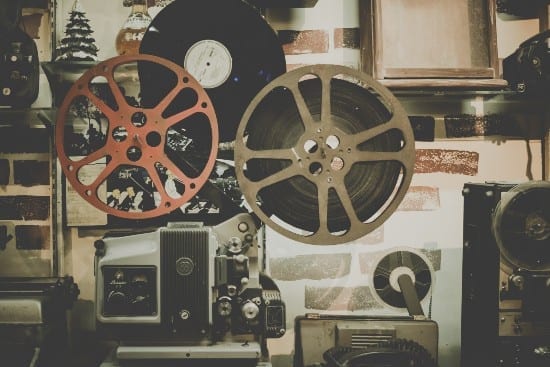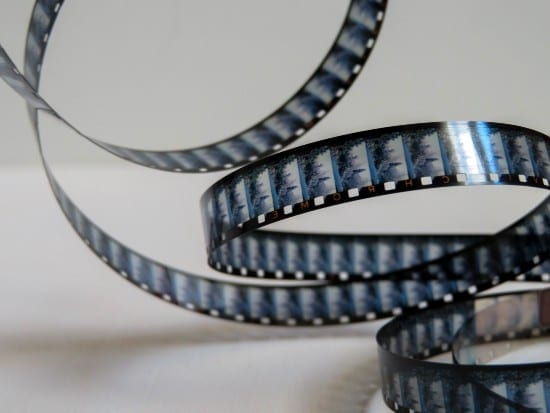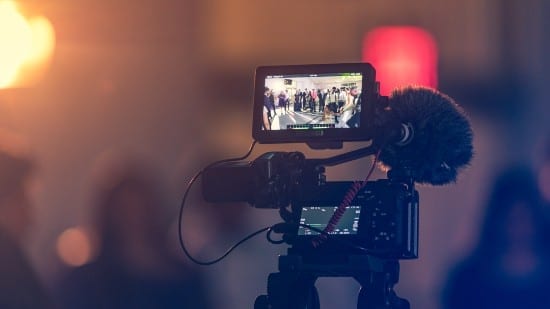Ever wondered what stitches together a myriad of images, videos, and sounds to tell a story?
That’s the magic of collage films.
These visual symphonies blend disparate elements to craft narratives that challenge traditional storytelling.
We’ll jump into the heart of collage filmmaking, exploring its techniques and the impact it has on audiences.
From avant-garde experiments to mainstream successes, we’ll uncover why this form captivates and speaks volumes in a language all its own.
Stick with us as we unravel the layers that make collage films a unique and compelling genre, and how they transform our viewing experience.
What Is A Collage Film?
Collage films are a novel approach to storytelling where varied visual and auditory elements are woven together.
They create an immersive narrative tapestry that stands out from traditional film structures.
These films often repurpose existing footage along with new material to offer a unique perspective or thematic exploration.
With their distinctive makeup, collage films break conventional barriers and invite the audience into a reimagined, composite world.
Understanding the essence of collage films involves recognizing the layered techniques they employ.
They merge: – Found footage
- Animated sequences,
- Still photography,
- Live-action clips,
- Abstract sounds.
This blend crafts a storyline that’s rich in context and aesthetic diversity.
These films often challenge viewers’ perceptions, requiring a deeper engagement to fully grasp the intricacies of the tale being told.
The transformative power of collage films lies in their ability to present complex ideas in a visually engaging manner.
They often tackle subject matters that benefit from a multidimensional approach.
Films like Waltz with Bashir and Samsara illustrate how collage elements can generate powerful emotional responses and stimulate intellectual discourse.
Due to the abstract nature of these films, they inherently defy strict categorization.
They may be experimental or lean towards mainstream appeal.
They serve as a testament to the versatility of the medium, reflecting the ever-evolving landscape of cinema.
As filmmakers, we’re intrigued by the limitless creative possibilities collage films present and the expansive canvas they offer for cinematic expression.
Techniques In Collage Filmmaking
In the world of collage film, blending disparate elements harmoniously is key.
We see a wide array of techniques employed by filmmakers to achieve this synthesis.
The first go-to method is the juxtaposition of contrasting footage.
This not only creates visual tension but also evokes a profound commentary on the relationship between the clashing images.
Employing montage sequences, filmmakers accelerate narrative pacing and compress time.
Montages are strategic in collage films as they convey the passage of time or a flurry of emotions efficiently, painting a broader picture without the need for extended sequences.
Found footage serves as a historical anchor in many collage movies.
Filmmakers scour through archives for scenes that resonate with their vision, repurposing them to fit new narratives.
The historical footage often adds layers of depth and authenticity to a story that would be difficult to simulate.
Here are a few other staple techniques:
- Split screens and multiple exposures – enabling the simultaneous portrayal of different perspectives and reinforcing thematic links,
- Stop-motion and time-lapse – offering a visually arresting way to show change or progression within the film,
- Voiceovers – providing context or linking themes within the visual mosaic.
Abstract sound design is crucial, shaping the film’s atmosphere and the audience’s emotional response.
We understand that sound and image may not always directly correlate but are instead meant to complement and sometimes intentionally jar the viewer, adding to the collage effect.

The incorporation of animation offers an artistic freedom unmatched by traditional formats.
Here, the only limit is the filmmaker’s imagination, and we often find innovative, whimsical, and poignant animated sequences interwoven with live-action footage.
With technology advancements, digital techniques like non-linear editing and CGI have expanded the collage filmmaker’s toolkit.
These digital innovations allow for almost boundless creativity in combining elements that captivate and challenge our audiences.
The Impact Of Collage Films On Audiences
Collage films have a profound effect on the way audiences experience cinema.
They often challenge viewers’ perceptions of reality and fiction by presenting a tapestry of images and sounds that can be both abstract and deeply meaningful.
These films engage our senses in diverse ways, prompting us to reflect on the juxtaposition of sights and sounds that may not traditionally fit together.
This form of filmmaking tends to evoke stronger emotional reactions compared to more conventional narratives.
Due to their unpredictable and non-linear nature, they stimulate curiosity and invite viewers to interpret the story personally, creating a unique experience for each individual.
The immersive experience of a collage film can lead to increased levels of audience engagement.
Here are some key impacts we’ve noticed:
- Sensory stimulation – Collage films often Use vivid imagery and captivating soundscapes.
- Intellectual stimulation – They encourage viewers to make connections between disparate elements, fostering a more active participation.
- Emotional resonance – The unconventional storytelling can resonate on a deeper, more personal level.
- Cultural reflection – Collage films can serve as a mirror to society, providing insight into various life experiences and social issues.
Above all, collage films open a space for dialogue among audiences.
They function not only as entertainment but also as conversation starters, enabling people to share their interpretations and opinions.
This kind of filmmaking invites viewers to be part of a broader cultural conversation, where the impact of the film extends beyond the screen and into the fabric of societal discourse.
We’ve observed that the audience’s reception of collage films can differ greatly.
While some embrace the challenge of a less structured narrative, others might find it disorienting or difficult to follow.
Nevertheless, it’s this diversity in audience reaction that highlights the power of collage filmmaking.
It underscores the ability of this medium to evoke a wide range of emotional and intellectual responses, solidifying its place as a compelling form of artistic expression.
Avant-garde Experiments In Collage Filmmaking
Collage filmmaking is an ever-evolving field, thanks in large part to the contributions of avant-garde artists.
These creators push the boundaries of what’s possible, reinventing and reimagining the language of film with each project.
Bold experimentation characterizes much of their work, breaking free from conventional storytelling and traditional narrative structures.
Avant-garde filmmakers often draw on diverse influences, marrying visual art practices with cinematic techniques.
Works like Meshes of the Afternoon and Dog Star Man stand as testament to the innovative spirit of collage films.
They combine various forms of media and cinematic effects to transport viewers to surreal and fragmented realities.
Among their many pioneering techniques, these filmmakers Use:
- Non-linear narratives – reshaping how stories unfold on screen,
- Mixed media – incorporating paintings, photographs, and digital images,
- Live-action with animation – creating hybrid visuals that captivate and intrigue.
The impact of such avant-garde collage films extends beyond the realm of cinema.
They influence and inspire fields such as advertising, music videos, and digital art.
Not confined to niche circles, these films reach a broader audience, inviting cinephiles and casual viewers alike to experience the fusion of art and storytelling.
Incorporating digital advancements has led to an explosion of creativity in the avant-garde sector.
Filmmakers now have access to tools like computer-generated imagery (CGI) and sophisticated software that simplifies the complex layering process.
This accessibility has democratized the art form, allowing more voices to contribute to the ongoing conversation of what cinema can be.
As we jump deeper into the principles and practices that make collage filmmaking captivating, it’s clear that the avant-garde has much to offer us.
Each groundbreaking film serves as a stepping stone in the evolution of this genre, continually reshaping our understanding and appreciation for the medium.
Mainstream Successes In Collage Filmmaking
Collage filmmaking has not only been the playground of avant-garde artists but has also found its way into mainstream cinema.
Iconic films such as Blade Runner and Forest Gump have utilized collage techniques to create rich, multi-layered narratives.
These films demonstrate that collage methods can be integrated into a wide range of genres.
From science fiction to historical drama, the use of collage filmmaking techniques has allowed for more fluid and creative storytelling.
The commercial success and critical acclaim of collage films have confirmed their appeal.
Amélie and The Grand Budapest Hotel have won audiences with their whimsical use of montage sequences and visual layering.
Let’s consider some key examples where collage filmmaking has been particularly effective:
- Blade Runner – Visual collages that extrapolate dystopian futures,
- Forrest Gump – Seamlessly integrating the protagonist into historical footage,
- Amélie – Stylized montages that enhance the magical realism of the story,
- The Grand Budapest Hotel – A vivid tapestry of miniature models and live-action shots.
These films have pushed the envelope, showcasing the potential of collage techniques in conveying complex themes.
The success of these movies underscores their ability to resonate with audiences globally.
Integrating collage into mainstream films has also proven effective in marketing campaigns.
Trailers that employ collage effects intrigue viewers, providing a sneak peek into the film’s unique visual style without giving away too much plot.
As collage filmmaking continues to influence the mainstream, we see a growing trend.
Digital tools have made these techniques more accessible, enabling filmmakers to explore this creative avenue with fewer constraints than ever before.
The ever-evolving nature of collage films promises more innovative storytelling ahead.
We see collage filmmaking as a vibrant component of modern cinema that continually inspires filmmakers and captivates audiences.
The Unique And Compelling Nature Of Collage Films
Collage films represent a distinctive fusion of visual and auditory stimuli that challenge traditional filmmaking norms.
They’re a hallmark of experimental cinema, where the ordinary rules of narrative structure and continuity are set aside for a more visceral experience.
By piecing together a myriad of different elements, collage films create a tapestry that speaks to both individual and collective experiences.
The fragmented imagery often mirrors the fragmented nature of memory and perception, making each viewing a personal journey.
Through techniques like montage and juxtaposition, these films convey complex themes that might be too multifaceted for conventional storytelling.
It’s this layering of meaning that invites viewers to jump deeper, to piece together the story that unfolds in fragments before them.
Consider the impact of films like Blade Runner, which seamlessly integrate collage elements to enhance their narratives.
Such films showcase thematic depth that resonates with a diverse audience.
Digital advances have broadened the toolkit available for creating collage films, turning every filmmaker into a potential innovator.
With the proliferation of affordable editing software and platforms for sharing, the barriers to entry for aspiring collage filmmakers have been significantly reduced.
Here are some of the core appeals of collage filmmaking:
- They offer non-linear narratives that engage the audience’s imagination,
- The films challenge viewers’ expectations and perceptions,
- Collage films often foster a unique connection with the audience, as the interpretation becomes highly individualized.
This approach to filmmaking isn’t just limited to the realm of art cinema; it’s found a place in mainstream media, captivating audiences with its unconventional allure.
Through a collage film, the ordinary is transformed into something extraordinary, pulling us into a world where boundaries between reality and fiction blur.
With the evolution of the genre, we’re constantly discovering new ways in which collage techniques can tell a story.
Filmmakers are So empowered to craft immersive experiences that might just redefine what we consider to be cinema.
While collage films may not be the staple of the box office, their influence on both filmmakers and audiences is undeniable.
Each project serves as a testament to the boundless creativity that shines when the traditional confines of storytelling are lifted.
How Collage Films Transform The Viewing Experience
Collage films are a revelation in the way we consume stories on screen; they fracture the traditional narrative arc, inviting us to piece together the story like a puzzle.
As these films break away from a singular perspective, they become a canvas for varied emotional and intellectual stimuli.
In the realm of imagination, collage films serve as a catalyst – each scene is a brushstroke on a broader cinematic landscape.
Elements from different sources spark connections in our minds, transcending the typical viewing experience to become something far more interactive.
The sensory immersion offered by collage films is unrivaled.
Visual and auditory layers come together to produce a symphony of impressions that resonate deeply with us, making each viewing a distinct encounter.
Below are ways collage films make an impact:
- Utilizing juxtaposition and contrast to underscore themes,
- Weaving together multiple storylines for a richer narrative tapestry,
- Playing with time and space to challenge our understanding of continuity,
- Offering a bricolage of visuals and sounds that provoke thought and discussion.
With techniques like non-linear storytelling and intertextuality, collage films invite us to engage on a level that goes beyond passive observation.
We become active participants, decoding symbols and connecting disparate threads in our quest for meaning.
Technological advancements have only amplified the potential of collage films.
The ease of digital editing and CGI abilities have allowed us to push the boundaries of what’s possible, creating experiences that are as layered and multifaceted as the medium itself.
Whether through the eyes of a character or the lens of auteur, each collage film is a journey through a complex landscape of ideas and emotions.
They challenge our preconceptions, encouraging us to view film as not just a story, but an exploration into the fabric of human experience.
What Is A Collage Film – Wrap Up
We’ve journeyed through the intricate world of collage films and their transformative impact on cinema.
These films not only push the boundaries of traditional storytelling but also offer a unique sensory immersion that invites us to explore and interpret.
They’ve proven their versatility across genres and their ability to captivate audiences worldwide.
As we’ve seen with iconic examples like Blade Runner and Forrest Gump, collage filmmaking isn’t just an artistic Try; it’s a powerful narrative tool that resonates deeply with viewers.
The rise of digital technology has only widened the horizon for these innovative films.
We’re excited to see where the future of collage films will take us as they continue to redefine our cinematic experiences and inspire a new generation of filmmakers.
Let’s keep our eyes peeled for the next groundbreaking collage film that will undoubtedly leave us pondering and discussing long after the credits roll.
Frequently Asked Questions
What Are Collage Films?
Collage films are a type of cinema that weaves together diverse elements using techniques like juxtaposition, montage, and found footage to create a unique and engaging narrative experience.
What Storytelling Techniques Are Common In Collage Filmmaking?
Common storytelling techniques in collage filmmaking include montage sequences, split screens, multiple exposures, stop-motion, time-lapse, voiceovers, abstract sound design, and animation.
How Do Digital Techniques Impact Collage Filmmaking?
Digital techniques, like non-linear editing and CGI, have broadened the scope for creativity, allowing filmmakers to more easily blend disparate elements and expand their storytelling possibilities in collage films.
Why Do Collage Films Evoke Strong Emotional Reactions?
The visual engagement and sensory stimulation provided by collage films challenge viewers’ perceptions and invite personal interpretation, leading to strong emotional reactions and intellectual stimulation.
How Do Collage Films Engage Viewers?
Collage films engage viewers by offering a multi-layered sensory and intellectual experience, encouraging active engagement with the story and stimulating conversation and cultural reflection.
Can You Give Examples Of Mainstream Collage Films?
Iconic mainstream films that have successfully employed collage techniques include Blade Runner and Forrest Gump, showcasing the wide-ranging appeal of these methods in cinematic storytelling.
What Is The Impact Of Collage Films On Audiences?
The impact of collage films on audiences includes offering a non-linear, immersive narrative that invites individual interpretation and challenges traditional viewing experiences.
How Have Collage Films Influenced Modern Cinema?
Collage filmmaking has redefined storytelling by providing filmmakers a vibrant medium to inspire and captivate audiences with innovative techniques and interactive narratives.
What Makes Collage Films Unique In Their Narrative Structure?
Collage films are unique due to their non-linear narratives, juxtaposition, and manipulation of time and space, challenging viewers to actively engage and interpret the story.
How Do Collage Films Transform The Viewer Experience?
Collage films transform the viewing experience by breaking from conventional storytelling and offering an interactive, layered encounter that provokes thought and encourages discussion among audiences.






Matt Crawford
Related posts
4 Comments
Leave a Reply Cancel reply
This site uses Akismet to reduce spam. Learn how your comment data is processed.



I love this idea of using disparate parts of your life to create a cohesive film. It’s so creative and inspiring!
It absolutely is!
I loved this post! The idea of combining different film elements to create a cohesive and meaningful whole is so intriguing. As a film enthusiast, I’m always looking for new and innovative ways to tell stories, and the concept of collage film seems like a great way to do just that. The examples provided in the post were really helpful in illustrating the different approaches that can be taken, and I’m excited to try out some of these techniques in my own filmmaking. Thanks for sharing!
Appreciate the comment